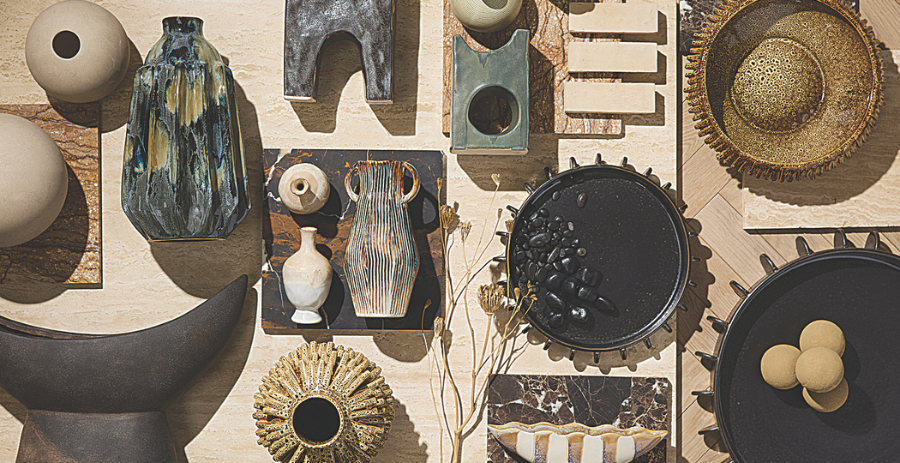Can biophilic design persuade consumers to spend: One CEO thinks so

HIGH POINT — The term “biophilic design” has been floating around the home furnishings arena for a while, but there are still many industry leaders who aren’t quite convinced of its value on the retail floor.
During a recent educational session at Las Vegas Market, a panel of designers joined Science in Design‘s Mike Peterson for a discussion on biophilic design as well as neuroaesthetics and design. Attendees in the audience included Jason Phillips, CEO of Phillips Collection, who weighed in after the seminar about how biophilia informs the company’s product development and future business strategies.

When did Phillips Collection as a company embrace biophilia and/or understand its importance to designed environments?
Truthfully, we embraced biophilic design long before we ever called it that. From the beginning, we’ve celebrated nature not just as inspiration, but as medium and message. Whether through reclaimed roots, river stones, petrified wood or sculptural organic forms, our collections have always blurred the line between art and environment.
When we connected with Mike Peterson and became a founding sponsor of Science in Design, it helped us put language around what we had been doing all along. Mike’s leadership gave voice to the instinctual, showing us how our reverence for nature aligned with neuroscience, wellness and beauty-driven design. It wasn’t a trend we followed; it was a truth we’d always lived.
As an early adopter of biophilic product design, do you talk about these concepts with your customers? If retail, do they “get it?” If designers, do they use their understanding of each concept to delineate themselves from their counterparts?
Yes, and increasingly so. With retailers, it often starts with storytelling, helping them translate the natural beauty of a piece into language that resonates with their shoppers. When they understand the emotional impact of these organic forms, it becomes a point of differentiation on the floor.
Designers take it deeper. They’re curating for wellness, not just aesthetics. When they discover that our pieces can lower stress, spark calm, or ignite joy, they see how these principles can be a signature in their work. They use biophilia and neuroaesthetics not just to inform, but to elevate, and in doing so separate themselves from peers who are still focused only on form or trend.
See also:
- Phillips Collection CEO talks 2025 growth strategy for furniture, decor
- Lighter numbers translated into productive conversations
Why is the timing right for this to take off as a needed perspective, both with biophilia as well as neurodiverse design?
Because people are craving connection — real, sensory, emotional connection. In a post-pandemic world, we’ve re-evaluated what our spaces do for us. It’s no longer about performance or polish alone; it’s about how a space makes you feel. Biophilia brings calm, grounding and beauty. Neurodiverse design introduces inclusivity, accessibility and emotional range.
These concepts speak to something ancient within us. As early humans, we sought refuge in high places: mountainsides with a rock wall at our back for safety, a fire in front for warmth and protection, and a vista to detect danger. That primal need for security and perspective still lives within us. Today, it shows up in the comfort of a second-story reading nook, a bay window overlooking trees or a skyline view of Central Park. We feel safest when there’s structure behind us and a view ahead. Design that taps into this instinct doesn’t just look good, it resonates at our core.
At Phillips, we’ve even partnered with marketing students from High Point University on semester-long studies exploring emotional and sensory response to design. These students used tools like 3M’s Visual Attention Software and galvanic skin response sensors to evaluate how people feel in the presence of different materials, forms and layouts. That kind of research continues to shape how we think about every product we bring to market.
In your opinion, what are some of the implications of this “proof” as it relates to the consumer audience? Are we on the cusp of something “big?”
Absolutely. The presence of data transforms these concepts from philosophy into action. When you can prove that wood grain lowers resting heart rate or that certain shapes and colors produce measurable mood shifts, design becomes a wellness tool, not just a visual one.
This is why Science in Design is so critical right now. It offers the bridge from theory to impact. For consumers, that means they’ll increasingly seek out products that make them feel good, not just look good. We’re entering an era where emotional design is no longer a luxury. It’s a new standard.
As more designers and retailers embrace this shift, the conversation will evolve from “What does it look like?” to “How does it make me feel?” That’s a big — and necessary — change.

Talk about some of the products buyers will see in the showroom at High Point Market that relate to both concepts.
We’re showcasing several collections that exemplify biophilic and neuroaesthetic design in action. Our Dancing Roots sculptures and the broader Origins collection are perfect examples. These reclaimed wood forms are shaped by nature, not machines — each one a singular story of time, place and organic beauty. Scientifically, the presence of wood grain has been shown to lower resting heart rate, and our pieces deliver that benefit while commanding visual impact.
On the neuroaesthetic side, our Cycladic Faces wall sculptures reduce the human face to its most elemental lines, evoking a shape even infants recognize. There’s a quiet emotional intelligence in this kind of design: It’s abstract, yes, but deeply familiar.
And for a completely different kind of sensory impact, we celebrate joy and scale. Our larger-than-life Great Danes in gold leaf are bold, exuberant and energizing. They don’t just fill a room; they raise its emotional temperature. That’s part of the spectrum, too. Biophilia may calm, but neurodiverse design allows for delight, playfulness and elevation. Our showroom reflects all of it.













































